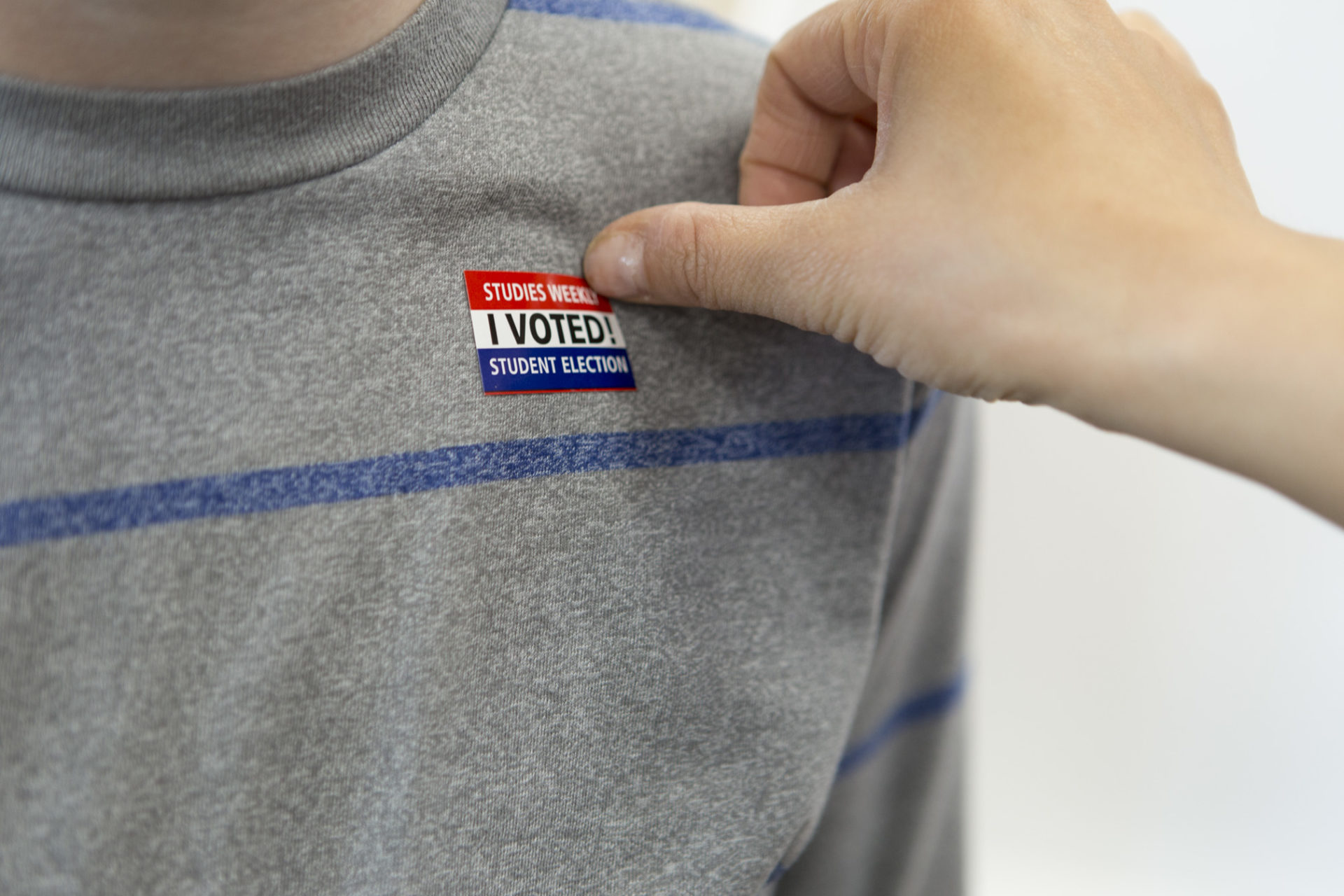Thinking on Education: Teaching the History of Voting Rights
Students sitting at the desks of today’s classrooms are America’s next voters. They literally will be the deciders of our nation’s future.
To that end, they must understand the importance and power of voting. We educators, in partnership with their parents, are in an important position to help them appreciate this responsibility. Teaching the younger generation about their civic duty has less to do with politics and more to do with freedom of choice.
“For the nation’s democracy to function properly and for government to provide fair representation, all eligible Americans must have the opportunity to vote — and be encouraged to do so. Our collective self-rule is established and fostered through free, fair, accessible, and secure elections through which the voice of every eligible American is heard,” said Danielle Root and Liz Kennedy, of the Center for American Progress, in a July 2018 article.
Teaching the History of Voting Rights
Teaching students the history of voting rights within the United States can help them better understand the weight and sway they have in exercising this right.
Our nation’s democratic process may be an example to others, but it took many protests, movements, and the mobilization of large groups of disenfranchised residents to get where we are today. Education about the history of voting in America expands students’ minds, and gives them a greater appreciation for their own ability to share their voice.
According to research by Rachel Roberson in 2016 for KQED, when George Washington was elected as our first president in 1789, only 6 percent of the population could vote. This was due to land ownership laws and states’ differing voting regulations. Thus, only white male landowners could vote.
In 1856, land ownership was finally removed from voting requirements, opening the poll doors to all white men.
Black Voters
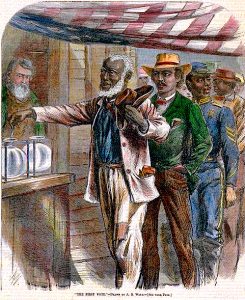
African Americans vote for the first time, as depicted in 1867 on the cover of Harper’s magazine. Engraving by Alfred R. Waud
Despite this legislation, some states enacted measures, such as literacy tests and voting taxes to subvert African Americans’ ability to register to vote. In some states, groups used violence and intimidation tactics to keep these same voters away from the polls.
These subversive efforts continued until 1965, when the Voting Rights Act was passed. It made it illegal for states to impose discriminatory restrictions on who could vote. This act came after decades of African American bloodshed while exercising their given right.
Female Voters
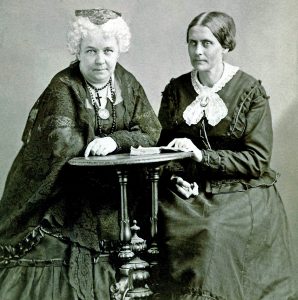
Elizabeth Cady Stanton and Susan B. Anthony (Napoleon Sarony, Public domain, via Wikimedia Commons)
Women had been trying to acquire their own right to vote since 1848. It took them more than 70 years to successfully secure that vote in 1920.
Well-known early leaders in this fight — Elizabeth Cady Stanton, Susan B. Anthony and Sojourner Truth — died before seeing women prevail.
Minority Voters
Despite the 14th and 15th Amendments, many minority groups in America’s history had to forge their own difficult routes to voting.
Native Americans
Though they could be considered America’s first residents, Native Americans had no voting rights within the new republic. In 1876, the Supreme Court ruled that Native Americans were not citizens as defined by the 14th Amendment and had no voting rights.
Their path to polling places took many steps.
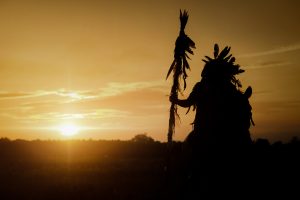 After the 1887 Dawes Act, Native Americans could obtain citizenship and the right to vote only by giving up their tribal affiliations. The Indian Naturalization Act passed three years later, and Native Americans could apply for citizenship through an application process similar to the process of immigrant naturalization.
After the 1887 Dawes Act, Native Americans could obtain citizenship and the right to vote only by giving up their tribal affiliations. The Indian Naturalization Act passed three years later, and Native Americans could apply for citizenship through an application process similar to the process of immigrant naturalization.
Decades later, Native American veterans were granted citizenship after they served in the military during WWI. The Indian Citizenship Act of 1924 also granted citizenship to Native Americans born in the United States. But, again, many states passed laws and policies during this time to prohibit Native Americans from voting.
Finally in 1947, after Miguel Trujillo — a Native American and former Marine — successfully sued New Mexico denying his right to vote, barriers to voting started to crumble. It still took until the Voting Rights Act of 1965 for this right to be guaranteed.
Asian Americans
Though they were an integral part of building America, especially in the West, Asian Americans had no citizenship rights.
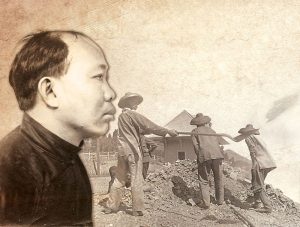 The Chinese Exclusion Act of 1882 barred people of Chinese ancestry from becoming citizens. Then 40 years later, the Supreme Court ruled that people of Japanese heritage were ineligible to become naturalized citizens. A Congressional ruling in 1925 barred Filipino Americans from citizenship unless they served three years in the Navy.
The Chinese Exclusion Act of 1882 barred people of Chinese ancestry from becoming citizens. Then 40 years later, the Supreme Court ruled that people of Japanese heritage were ineligible to become naturalized citizens. A Congressional ruling in 1925 barred Filipino Americans from citizenship unless they served three years in the Navy.
Finally, in 1952, the McCarran-Walter Act granted all people of Asian ancestry the right to become citizens.
Puerto Rico and D.C.
Congress passed further voting rights laws in the 1970s and 1990s to guarantee better access to polls and voter registration. But today Puerto Rico and other U.S. territories still do not have full voting representation in the federal government. Stateside, those living in Washington D.C. have the right to vote for president, but do not have any representatives in Congress.
Importance of Voter Turnout
The right to vote in American elections has a long history of conflict, and students need to understand the value of making their voice heard. Voter turnout on election days is one of the most powerful ways citizens can do that. It also can be an effective path to enacting change that strengthens the rights of all citizens.
“It’s essential that all of us turn out to vote. Every vote is a building block in our democracy. The more people who vote, the stronger our system of government becomes. As a nation, we should do much better. We can do much better,” said Linda A. Klein of the American Bar Association in an October 2018 article.
As former President Franklin D. Roosevelt said, “Nobody will ever deprive the American people of the right to vote except the American people themselves and the only way they could do this is by not voting.”
We highlight women’s contributions to our nation’s history, often during Women’s History Month, and the right to vote is an important topic. During March, and throughout the year, voting rights should be a serious study for our students who will be our next generation of leaders.
Find more primary sources and articles about voting through your Studies Weekly online platform at online.studiesweekly.com.
